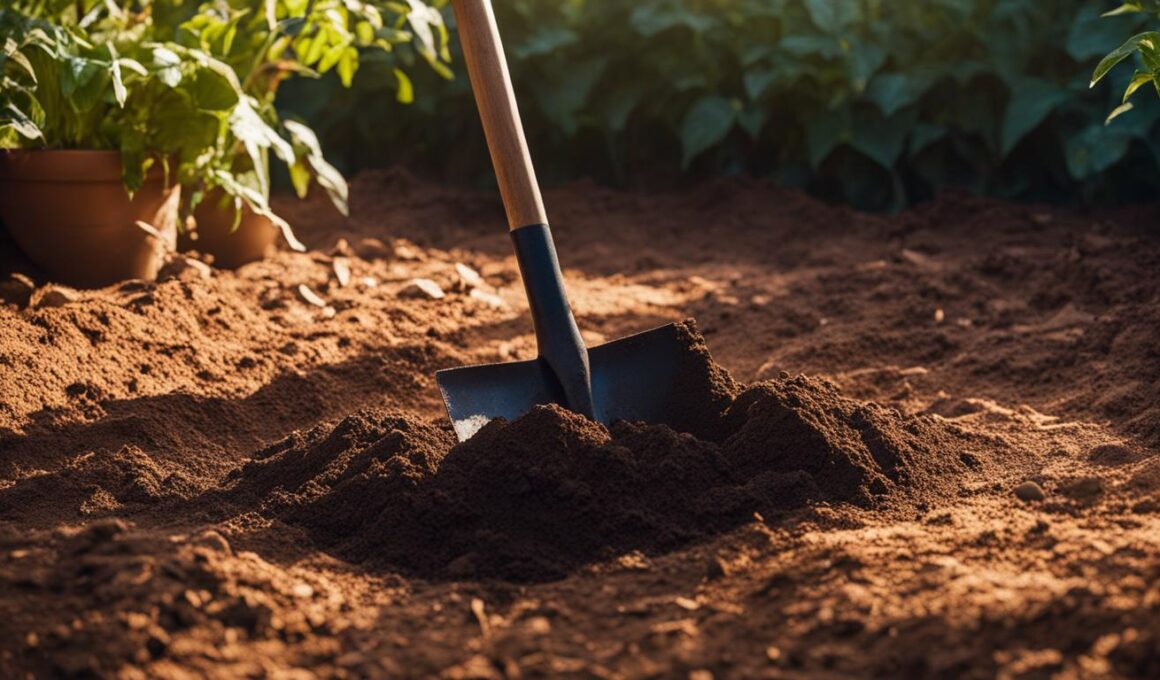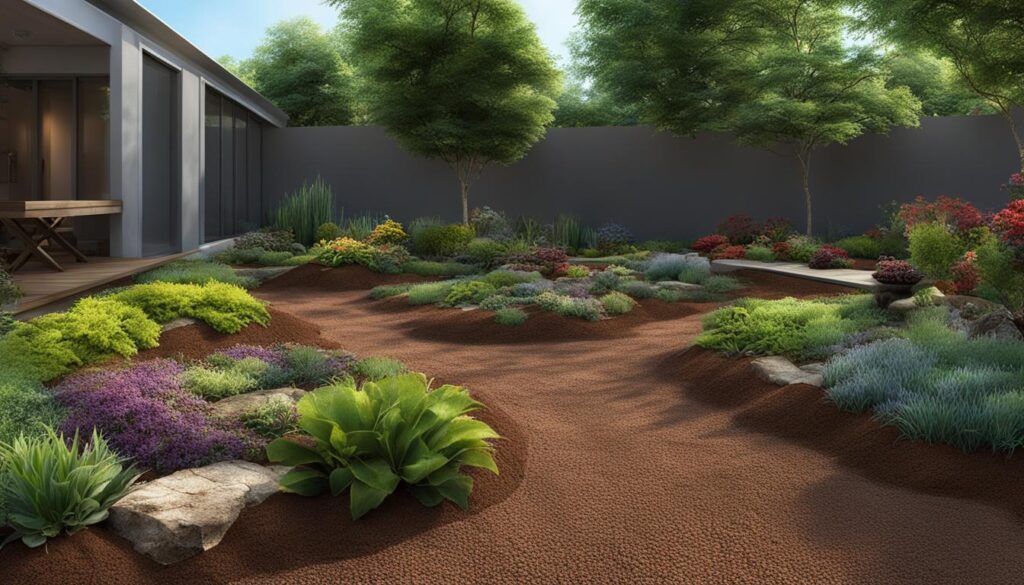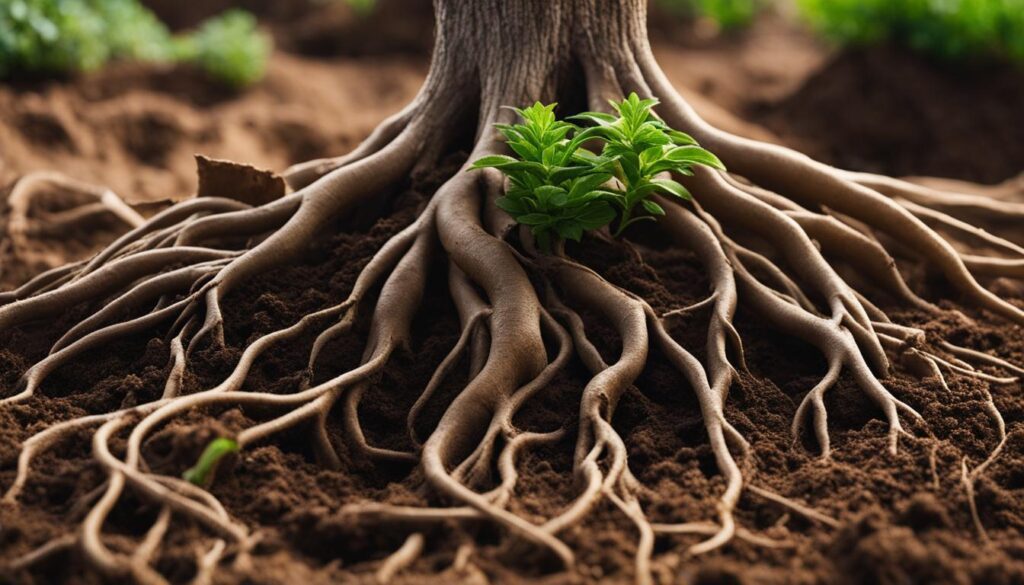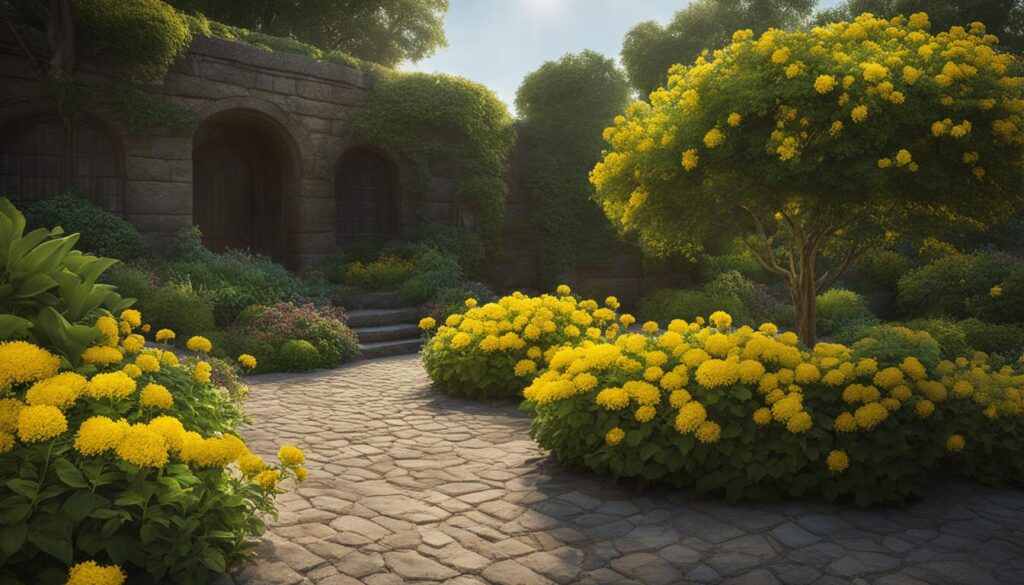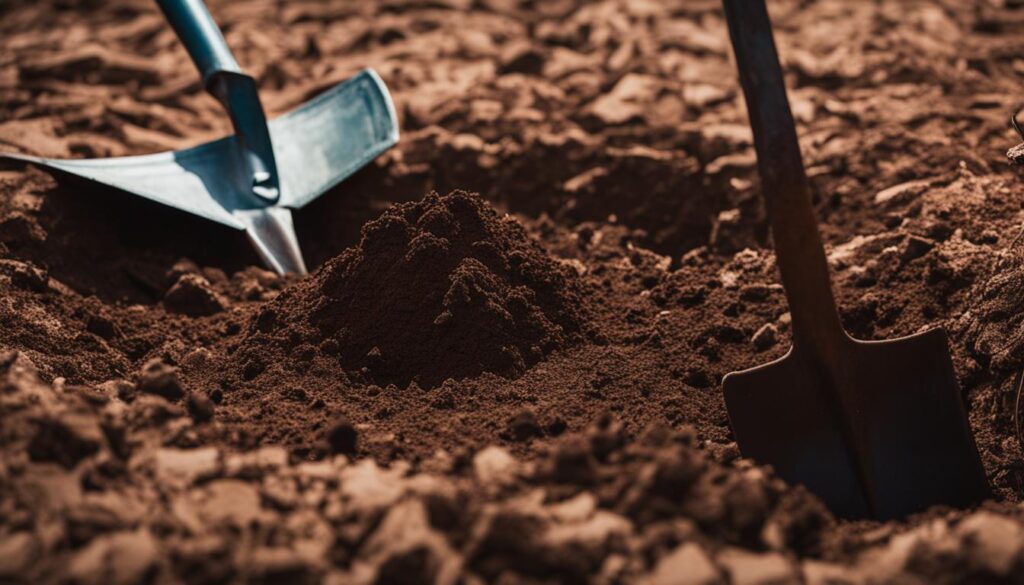Clay soil can be both a blessing and a curse for gardeners. While it is rich in nutrients, its dense and heavy texture can impede proper drainage and root development, leading to stunted growth and disappointing yields. However, with the right techniques and amendments, you can transform your clay soil into a thriving haven for your dry garden. In this article, we will explore effective tips and strategies to help you master amending clay soil for dry gardens and maximize the productivity of your outdoor space.
Key Takeaways:
- Understanding the unique composition of clay soil is essential in identifying and implementing the right methods to improve its structure and fertility for dry gardens.
- Cultivating a dry garden in clay soil poses challenges such as poor drainage and limited nutrient availability, but these obstacles can be overcome with the right techniques.
- Before amending your clay soil, it is important to conduct a soil test to determine its composition and pH levels.
- Soil amendments such as organic matter, gypsum, and sand can improve the structure and drainage of clay soil.
- Boosting soil fertility through the use of organic fertilizers and companion planting can help your dry garden thrive.
Understanding Clay Soil: A Unique Composition
Clay soil is a complex composition of tiny particles that have a unique affinity for water molecules. When wet, these particles clump together, forming compacted clumps that can impede proper drainage and restrict airflow in the soil. Conversely, when dry, clay soil hardens, making it difficult for roots to access essential nutrients and oxygen. Understanding the distinct characteristics of clay soil is key to implementing effective strategies for improving its structure and fertility in dry gardens.
The composition of clay soil plays a crucial role in its behavior and challenges faced by gardeners. Unlike sandy or loamy soil, clay soil particles are much smaller, allowing them to hold onto water molecules more tightly. This affinity for water causes clay soil to retain moisture for extended periods, leading to poor drainage and waterlogged conditions in dry garden settings.
Clay soil is rich in nutrients, making it a potential powerhouse for plant growth. However, its dense and heavy texture can hinder root development and restrict the movement of air, water, and nutrients within the soil.
Furthermore, the compact nature of clay soil can limit root penetration, making it challenging for plants to establish deep and extensive root systems. This restricted root growth, combined with poor drainage, can result in stunted growth, nutrient deficiencies, and overall suboptimal performance of plants in dry garden environments.
| Characteristics of Clay Soil | Effects on Dry Gardens |
|---|---|
| Compacted clumps | Poor drainage |
| Tight particle arrangement | Limited root penetration |
| Excessive moisture retention | Waterlogged conditions |
| Restricted airflow | Decreased oxygen availability for roots |
To overcome these challenges and create an ideal environment for your dry garden, it is essential to implement strategies and amendments that improve the structure and fertility of clay soil. By understanding the unique composition of clay soil and its impact on dry gardens, you can make informed decisions on the most effective methods to enhance your soil and maximize the productivity of your outdoor space.
The Challenge of Working with Clay Soil in Dry Gardens
Cultivating a dry garden in clay soil poses unique challenges. The dense and heavy texture of clay soil hampers proper drainage, leading to waterlogged roots in dry garden conditions. This excess moisture can suffocate the roots and make it difficult for plants to access oxygen. Additionally, the compact nature of clay soils creates a barrier to root penetration, making it challenging for plants to extract necessary nutrients from the soil.
To create an ideal environment for your dry garden to thrive, it is essential to address these challenges and improve the drainage of clay soil. Proper drainage will prevent waterlogging and allow the roots to access the necessary oxygen and nutrients. Fortunately, there are several effective strategies you can employ to improve the drainage and overall health of clay soil in dry gardens.
Strategies for improving drainage in clay soil:
- Amending with organic matter: Incorporating organic matter, such as well-rotted compost or aged manure, into the clay soil can help break up the compacted clumps and improve its structure. This amendment enhances drainage by creating space for air and water movement through the soil.
- Adding sand: Mixing sand into clay soil, in the right proportions, can improve its texture and aid in better drainage. However, it’s important not to add too much sand, as it can lead to further compaction and hinder drainage.
- Installing drainage systems: In areas with severe clay soil and persistent drainage issues, installing drainage systems, such as French drains or gravel-filled trenches, can help alleviate excess moisture and prevent waterlogging in the garden.
- Creating raised beds: Constructing raised beds filled with well-draining soil or a mixture of topsoil and compost can provide better control over moisture levels and improve drainage for plants in clay soil.
By implementing these strategies, you can overcome the challenges of working with clay soil in dry gardens and create a more hospitable environment for your plants to thrive.
| Challenge | Solution |
|---|---|
| Poor drainage | Amending with organic matter and sand, installing drainage systems, creating raised beds |
| Compacted soil hindering root penetration | Amending with organic matter, adding sand, creating raised beds |
| Difficulty accessing nutrients | Amending with organic matter, adding sand |
Testing Your Soil: Understanding Your Clay Soil’s Composition
Before you start amending your clay soil, it’s crucial to understand its composition and pH levels. Conducting a soil test will provide valuable insights that will guide your efforts in improving the soil’s structure and fertility. There are two main types of soil testing that can be done to understand the composition of clay soil:
- Jar Test: This simple DIY test allows you to analyze the different layers of your soil and assess their composition. Here’s how you can conduct a jar test:
- Take a soil sample from your garden.
- Place it in a clear glass jar, filling it about one-third of the way.
- Add water to the jar, leaving about an inch of space at the top.
- Shake the jar vigorously for a few minutes to mix the soil and water.
- Let the jar sit undisturbed for a few hours or overnight.
- Observe the layers that form in the jar. The bottom layer will be sand, followed by silt, and finally clay.
- Measure the thickness of each layer to understand the composition of your soil.
- pH Testing: Testing the pH of your clay soil is essential as it determines the availability of nutrients to plants. You can use a soil pH testing kit or send a soil sample to a laboratory for analysis. The optimal pH range for most plants is between 6.0 and 7.0. If your soil is too acidic (pH below 6.0), you may need to add lime to raise the pH. If it’s too alkaline (pH above 7.0), sulfur or other acidifying amendments can help lower the pH.
By understanding the composition and pH levels of your clay soil, you can make informed decisions about the amendments and techniques that will be most effective in improving its structure and fertility for your dry garden.
| Advantages of Soil Testing | Disadvantages of Soil Testing |
|---|---|
|
|
Soil testing is a crucial step in the process of amending clay soil for dry gardens. It provides valuable information that will guide your efforts in improving soil structure and fertility. By understanding the composition and pH levels of your soil, you can make informed decisions about the amendments and techniques that will be most effective in creating an ideal environment for your dry garden to flourish.
Soil Amendments for Clay Soil: Improving Structure and Fertility
When it comes to amending clay soil for dry gardens, the right soil amendments can make all the difference. By improving the structure and fertility of your clay soil, you can create a more conducive environment for your plants to thrive. There are several key amendments that can help you achieve this goal.
Organic Matter
One of the most effective amendments for clay soil is organic matter, such as compost. Adding compost to your soil helps to break up compacted clumps and improve soil structure. It also enriches the soil with essential nutrients, promoting healthy plant growth in your dry garden. Incorporate a generous amount of compost into your clay soil to see significant improvements.
Gypsum
Gypsum is a natural mineral that can be used to loosen compacted clay soil and improve drainage. By adding gypsum to your clay soil, you can help break up those tight clay particles, allowing water to drain more freely. This helps to prevent waterlogged roots and creates a healthier environment for your plants. Apply gypsum according to the recommended dosage for your specific soil type.
Sand
Sand can also be used as an amendment to improve the texture and drainage of clay soil. However, it is important to use the right proportions of sand to avoid creating a concrete-like mixture. A general guideline is to mix in one part sand to every three parts of clay soil. This will help to improve drainage while maintaining a suitable soil structure for your dry garden.
| Soil Amendment | Benefits |
|---|---|
| Compost | Improves soil structure, enhances fertility, and adds essential nutrients |
| Gypsum | Loosens compacted clay soil, improves drainage, and prevents waterlogging |
| Sand | Improves texture and aids in better drainage when used in the right proportions |
By using these soil amendments, you can improve the structure and fertility of your clay soil, creating an ideal foundation for your dry garden. Remember to incorporate organic matter, such as compost, to enrich the soil and break up compacted clumps. Consider using gypsum to improve drainage and prevent waterlogging. If needed, sand can also be used to further enhance the texture and drainage of your clay soil. Implementing these amendments in the right proportions will help you create a thriving environment for your dry garden.
“Amending clay soil is crucial to improve its structure and fertility for dry gardens. Organic matter, such as compost, is a valuable amendment that breaks up compacted clumps and enhances soil structure while enriching it with essential nutrients.” – Gardening Expert
Boosting Soil Fertility: Providing Essential Nutrients for Dry Gardens
One of the key factors in successfully amending clay soil for dry gardens is ensuring that it has sufficient nutrients to support plant growth. Clay soil, although rich in minerals, can often be deficient in certain essential nutrients that are important for the health and productivity of your plants. By providing these essential nutrients, you can create an optimal environment for your dry garden to thrive.
One important nutrient to consider is nitrogen, which is essential for leafy green growth and overall plant vigor. Organic fertilizers rich in nitrogen, such as composted manure or blood meal, can be incorporated into the soil to supply this nutrient. Additionally, utilizing legumes as cover crops can provide a natural source of nitrogen through the process of nitrogen fixation, where legumes draw nitrogen from the atmosphere and convert it into a form that plants can use.
Another essential nutrient to focus on is phosphorus, which plays a crucial role in root development, flowering, and fruit production. Incorporating phosphorus-rich organic fertilizers, such as bonemeal or rock phosphate, can help supply this nutrient to your plants. These fertilizers slowly release phosphorus over time, ensuring a steady supply for your dry garden.
Remember to follow the recommended application rates for fertilizers and amendments, as overuse can lead to nutrient imbalances or even plant damage. Consulting with a local extension service or a knowledgeable gardening professional can provide valuable insights specific to your region’s soil and plant requirements. By providing essential nutrients to your clay soil, you can help boost soil fertility and create an ideal environment for your dry garden to thrive.
Table: Essential Nutrients for Dry Gardens and their Functions
| Nutrient | Function |
|---|---|
| Nitrogen | Stimulates leafy green growth, promotes overall plant vigor |
| Phosphorus | Supports root development, flowering, and fruit production |
| Potassium | Enhances disease resistance, aids in water and nutrient uptake |
| Calcium | Strengthens cell walls, reduces the risk of blossom end rot in tomatoes |
| Magnesium | Essential for chlorophyll production, aids in photosynthesis |
| Sulfur | Important for protein synthesis and overall plant health |
Companion Planting for Clay Soil: Beneficial Alliances
When working with clay soil in your dry garden, companion planting can be a valuable technique to create beneficial alliances between different plant species. Certain plants have unique qualities that can help improve the structure and fertility of clay soil, making them ideal companions for your dry garden. By strategically selecting and placing these plants in your garden, you can enhance the overall health and productivity of your plants.
One beneficial companion for clay soil is legumes. Legume plants, such as beans and peas, have the ability to fix atmospheric nitrogen and convert it into a usable form for other plants. This process, known as nitrogen fixation, enriches the soil with nitrogen, an essential nutrient for plant growth. By planting legumes alongside your other plants, you can naturally increase the nitrogen content of your clay soil, promoting healthier and more productive growth.
Another valuable companion for clay soil is deep-rooted root crops. Plants like carrots, radishes, and parsnips have long taproots that penetrate deep into the soil, helping to break up compacted clay and improve soil structure. These root crops make excellent companions for other plants as they work to aerate the soil, allowing for better water penetration and root development. Additionally, their deep roots can help prevent soil erosion and runoff in dry garden conditions.
Companion planting is a technique where plants with complementary qualities are grown together to benefit each other. By strategically selecting and placing these plants, you can create a harmonious ecosystem in your garden that promotes healthy growth and reduces the need for synthetic fertilizers and pesticides.
When incorporating companion planting into your dry garden, consider the growth habits and requirements of each plant to ensure they are compatible. Group plants with similar light, water, and nutrient needs together to optimize their growth and minimize competition. By choosing the right companions for your clay soil, you can create a thriving and diverse garden that maximizes the benefits of each plant.
| Companion Plants | Benefits |
|---|---|
| Legumes (beans, peas) | Fix atmospheric nitrogen, enrich soil with nitrogen |
| Root crops (carrots, radishes, parsnips) | Break up compacted clay soil, improve soil structure |
| Marigolds | Deter pests and nematodes |
| Borage | Attract pollinators, improve overall garden health |
Other beneficial companion plants for clay soil include marigolds and borage. Marigolds have natural pest-repellent properties and can help deter pests and control nematode populations in the soil, reducing the risk of damage to your crops. Borage, on the other hand, is a pollinator-attracting plant that can improve overall garden health by increasing biodiversity and promoting pollination.
By incorporating companion planting strategies and selecting the right companions for your clay soil, you can create a vibrant and balanced ecosystem in your dry garden. These beneficial alliances can help improve soil structure, enhance nutrient availability, and reduce pest problems, leading to healthier and more productive plants.
DIY Soil Improvement Techniques for Clay Soil in Dry Gardens
Improving the quality of clay soil in your dry garden is essential for creating a thriving outdoor space. Fortunately, there are several DIY techniques you can employ to enhance the structure and fertility of your clay soil. These techniques include constructing raised beds and utilizing mulching to regulate moisture levels and improve drainage.
1. Raised Beds:
Raised beds are a practical solution for addressing the challenges of clay soil in dry gardens. By building raised beds, you can have better control over moisture levels and create an environment that promotes proper drainage and root development. To create raised beds, outline the desired shape of your bed, remove the existing vegetation, and build a frame using wood or stone. Fill the raised bed with a mixture of amended soil and organic matter, such as compost, to provide a rich growing medium for your plants.
2. Mulching:
Mulching is an effective technique for improving the moisture retention and temperature regulation of clay soil in dry gardens. Apply a layer of organic mulch, such as straw, wood chips, or compost, around your plants. Mulch acts as a protective barrier, preventing evaporation and weed growth, while also insulating the soil and minimizing fluctuations in temperature. As the mulch decomposes, it adds organic matter to the soil, enhancing its fertility and structure.
By implementing these DIY soil improvement techniques, you can transform your clay soil into a more suitable environment for your dry garden. Raised beds provide better control over drainage and root development, while mulching helps retain moisture and regulate soil temperature. With these strategies in place, your dry garden will flourish, yielding bountiful harvests and vibrant blooms.
| Technique | Benefits |
|---|---|
| Raised Beds |
|
| Mulching |
|
What Are the Key Tips for Amending Clay Soil for Dry Gardens?
When amending clay soil for dry gardens, consider using a soil pH adjustment guide for desert plants. Testing the soil pH and incorporating organic matter like compost can help improve soil drainage and water retention. Adding gypsum can also help break up the clay and improve the soil structure for better plant growth.
Conclusion: Mastering Amending Clay Soil for Dry Gardens
Amending clay soil for your dry garden requires careful consideration and strategic techniques. By understanding the unique composition of clay soil and implementing effective amendments, you can create an environment that promotes optimal growth and productivity.
Start by testing your soil to determine its composition and pH levels. This will guide you in selecting the right amendments to address any nutrient deficiencies or imbalances. Organic matter, such as compost, can help break up compacted clumps and enrich the soil with essential nutrients.
In addition to improving the structure of the soil, it’s important to ensure that your clay soil has sufficient nutrients. Consider incorporating organic fertilizers rich in nitrogen and phosphorus, or utilizing legumes as cover crops to provide a natural source of these nutrients.
Companion planting can also be beneficial for your clay soil. Select plant species, such as legumes and root crops, that have symbiotic relationships with clay soil. Legumes can fix atmospheric nitrogen, while deep-rooted root crops help break up compacted soil, improving its structure and aeration.
Lastly, consider employing simple DIY techniques to further improve your clay soil. Constructing raised beds can provide better control over moisture levels and improve drainage, while mulching with organic materials can help retain moisture and regulate soil temperature.
Remember, mastering the art of amending clay soil for your dry garden is a process that requires patience and experimentation. By following these key tips, you can transform your backyard into a thriving oasis and create the ideal conditions for your plants to flourish.





